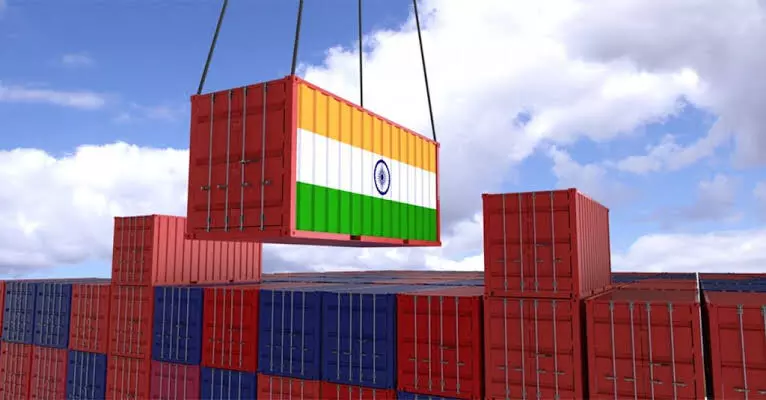Export curbs ease positive sign; India must cut reliance amid USD 100 bn trade gap: GTRI

New Delhi: China's decision to ease restrictions on exports of rare-earth minerals and fertilisers to India is a positive signal, but India must work to reduce its dependence on the neighbouring country, with which it runs an alarming USD 100 billion trade deficit, economic think tank GTRI said on Wednesday. It said that between 2014 and 2024, China's dominance over India's import landscape only widened. Its share in India's telecom and electronics imports reached 57.2 per cent, while machinery and hardware accounted for 44 per cent. Chemicals and pharmaceuticals followed closely at 28.3 per cent, it said. For India, the Global Trade Research Initiative (GTRI) said, the only real safeguard is to build strength at home by cutting dependence, investing in deep manufacturing, and becoming a true product nation. "A stronger, more self-reliant India will be better placed to engage China on equal terms, while keeping relations steady and pragmatic rather than hostage to sudden shifts," GTRI Founder Ajay Srivastava said.
India's trade deficit with China, which hit a record USD 100 billion in FY2025, is not just alarming in scale but also in structure, it said. "What makes it more serious is that China now dominates India's import baskets across virtually every industrial category -- from pharmaceuticals and electronics to construction materials, renewable energy, and consumer goods," it added. Citing examples, the think tank said in antibiotics like erythromycin, China supplies 97.7 per cent of India's needs; in electronics, it controls 96.8 per cent of silicon wafers and 86 per cent of flat panel displays; in renewable energy, 82.7 per cent of solar cells and 75.2 per cent of lithium-ion batteries come from China. Everyday products such as laptops (80.5 per cent share), embroidery machinery (91.4 per cent), and viscose yarn (98.9 per cent) are sourced from China. Srivastava said this overwhelming dominance gives Beijing potential leverage against India, turning supply chains into a tool of pressure in times of political tension. "The imbalance is deepening as India's exports to China continue to decline, reducing India's share in bilateral trade to just 11.2 per cent today from 42.3 per cent two decades ago. Such structural dependence exposes India to serious geopolitical risks and highlights the urgent need for domestic production capacity and resilient supply chains," he added. According to the GTRI, China now dominates Indian import baskets across virtually every industrial category -- from pharmaceuticals and electronics to construction materials and consumer goods. In the pharmaceutical sector, India imported USD 166.3 million worth of erythromycin from China, accounting for 97.7 per cent of its global imports of that antibiotic, it said, adding China supplied 88.1 per cent of India's total antibiotic imports, forming the backbone of India's pharmaceutical ingredient supply. In electronics and semiconductors, India imported USD 151.6 million worth of silicon wafers from China (96.8 per cent share), and USD 1.06 billion in flat panel display modules (86 per cent).
Similarly, it said, computer monitors (USD 376.5 million) also saw a 66.8 per cent Chinese share. Imports of printed circuit boards (USD 612.2 million), memory chips (USD 1.75 billion), and microprocessors (USD 1.65 billion) were also heavily reliant on China, with shares between 37 per cent and 40.5 per cent. In consumer electronics, laptops and tablets topped the list with USD 4.45 billion in imports, 80.5 per cent of which came from China. "Smartphones accounted for USD 259.7 million (58.8 per cent), while smartphone components and parts stood at USD 763.8 million (55.4 per cent) and USD 7.15 billion (51.7 per cent) respectively," it said, adding imports from China in low-tech consumer goods -- ceramic tiles, plastic furniture, lighting products, even headgear -- rose over 150 per cent in the same period. These goods not only undermine Indian MSMEs but also reflect a widespread erosion of domestic industrial depth, Srivastava said. "The data signals a clear imbalance. India is structurally dependent on China, while gaining little market access in return. Without urgent policy intervention, this economic asymmetry will only worsen," he added. To reduce India's trade deficit with China from USD 100 billion to USD 50 billion within five years, he suggested steps such as reverse engineering for rapid substitution and building deep-tech manufacturing.



